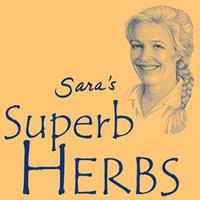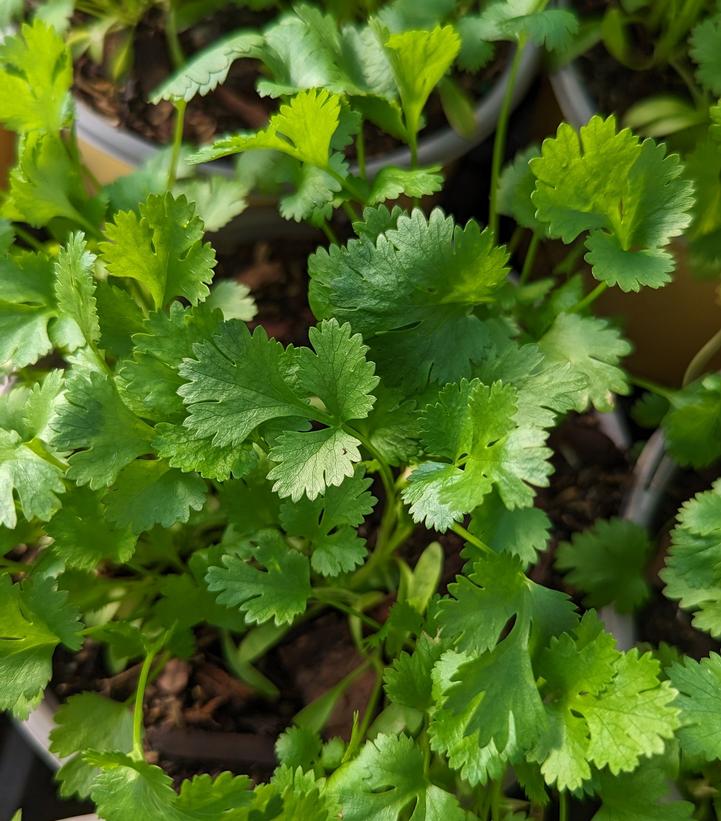« Previous Plant | Next Plant »
Coriandrum sativum
Cilantro (Coriander)
- » Delicious leaves
- » Nice planted en masse
- » Great in the ground or containers
- » Annual

- Category:Edibles
- Breeder:Sara's Superb Herbs®
- Hardiness Zone:8-10
- Height:10-12 in
- Spread:8-10 in
- Bloom Color: Green Shades
- Foliage Color: Green Shades
Frilly and tasty, the leaves of this herb are an absolute must for any Mexican or Asian cooking! Continual pruning prevents flavor-altering flowers, while multiple plantings will allow you enough cilantro to put the snap in your salsa all summer and into the fall. Cilantro loves full sun but tolerates part shade and grows equally well in the ground or in containers. Annual.
Foliage Color
| • | Green |
Maintenance and Care
| • | Mass Planting |
Programs
| • | Sara's Superb Herbs |
Exposure
| • | Full Sun |
Additional Information about Coriandrum sativum
Coriandrum sativum has been cultivated for over 3,000 years. Seeds have been found in the tombs of the ancient Egyptians. It is one of the bitter herbs in the Passover ritual. Greek and Roman physicians used it medicinally and steeped it in vinegar to preserve meat. The Chinese believed coriander powder could make a person immortal. And finally, in The Thousand and One Nights, it is referred to as an aphrodisiac.
It is a bright green annual with erect, finely grooved stems. The leaves are round and slightly toothed and could be mistaken for anise. It has tiny white flowers and will grow to 3' if given the space. It is native to the eastern Mediterranean and southern European regions. It is now cultivated in Morocco, throughout Latin America and in the USA.
Coriander and cilantro are the same plant. The seeds are referred to as coriander, the leaves, cilantro. It bolts very quickly. There are new strains being developed that take longer to bolt. Look for these if you are growing for the leaves. You might also stagger plantings to have it all season.
Harvest and Use: This herb has a bold flavor and fragrance. It is now very popular because it is one of the main herbs in salsa. The leaves have a sage flavor mixed with tangy citrus. It combines well with onions, clams, oysters, potatoes, and, of course, is the herb par excellence for any salsa. Add it to soups, stews, salad, and marinades. It is not surprising to find this citrus-nut flavored herb in Southeast Asian, Indian, and Thai cooking.
Commercially it is used in the food and beverage industries in sugared confections and liqueur. The essential oil is used in the perfume industry and in cosmetics. I have used it to flavor lip balm with great success and plan to add it to my herbal soaps.
Harvest the leaves before the plant flowers for best flavor. Use fresh as it does not dry or freeze well. If it is the seed you want, harvest when the leaves and flowers turn brown and before the seed scatters. Seeds have a bitter taste until they dry. They store well in a tight-lidded jar in a cool, dry, dark place.
Growing & Maintenance Tips for Coriandrum sativum
Due to quick bolting, stagger plantings for a steady crop. Continual pruning prevents flavor-altering flowers. Loves full sun but will tolerate part shade. Water regularly, during the season, but be careful not to over-water,especially in cooler weather. Fertilize with a balanced all-purpose food, and avoid high nitrogen fertilizers, which will speed up the bolting.
Cultivation and Propagation: Cilantro can be grown in full sun or partial shade. Do not crowd the plants. It self-seeds readily. In companion planting, it enhances the growth of anise. It is not difficult to grow from seed, but it is best to plant it where you wish it to stay as it hates to be transplanted. Do not over-fertilize as too much nitrogen takes away the flavor.
Pests: It can suffer from wilt and mildew. Acid soil, a pH of 6.6, helps prevent wilt which is recognized by browning of the leaves and thinning of the vascular system, causing very weak stems. Remove plants and burn them. Growing on the dry side helps alleviate the problem of mildew or spray mildewed plants with ¼ tsp baking soda to a quart of water.
